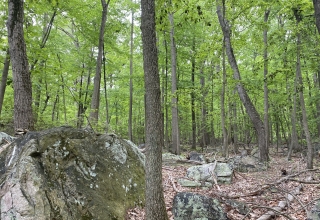
As a Drama instructor of thirty years I have a facility with observing people and asking sensitively probing questions; consequently the coaching approach feels very comfortable to me. In addition I have used video feedback on a number of occasions as a tool to present an objective image, (as objective as anything can be) to the participant. I have observed that people, when given a safe framework, can, to a large extent, separate their actions from their ego and evaluate what they see in a reasonably objective fashion. I have witnessed people grow tremendously in reasonably short order and I have witnessed their gratitude even through their anxiety and fear. Additionally I use the Socratic method of questioning as a staple of my teaching. I ask what people know and then probe to see what else they know, what they don’t even know they know, and then collectively, with well placed and framed questions we build on this knowledge. Coaching shares many of these attributes: well framed, sensitively asked probing questions, with summary observations to feed back into the mix.
In reflecting on my experiences with video feedback, I have coached a group of eight musicians; a mixed group of managers in First Nations government, a politician, and a student seeking a scholarship. Additionally I have coached hundreds of students and actors for both stage and film. I think Malcolm Gladwell would agree that I have put in the requisite 10,000 hours to achieve professional status.
My Style
When I work with people in straightforward executive coaching I always ask if they mind if I use a piece of paper. I tell them they can have it at the end if they want it; I say it helps me remember and keep track; I tell them it is more like a map than notes. I put it on the table between us and I try to use an 11 by 17 sheet so that there is lots of room to scribble. I like the paper because it gives us both something else to focus on beside each other. I try not to sit opposite but beside; in many ways it reminds me of the conversations one might have while driving. There is something happening beside the conversation. Both have a focus outside of each other. Usually I write down something that the client has said in reference to my question “So where do we start today – thoughts from last session? Something new? And so we have stared, something is written down and from that I might list what the person has said and draw lines linking thoughts.
Sometimes I draw roots under a statement and ask “What do you think is going on underneath?” I really like being able to point to something and say “now what about this”, and there it is on the paper, something objective that we can both contemplate. Or I might say “now I’ve heard this (pointing) and this (pointing) and this (pointing) and I’m wondering if there is a relationship?” Sometimes it’s nice not to have to name things but to see three things in three circles connected by three lines. It is concrete and “objective”. Clients say they really like it and some ask for it to take home and some ask that I keep it. Some bring it back on the next meeting and point to the things they have been thinking about. I always date them.
My Strategies
In the observational coaching, when using video feedback, I take a measure of time preparing the client especially if they have never seen themselves on videotape. I say things like “So, you’re going to see lots of things but all we’re really looking at today is ____________ . We’re not going to worry about our hair or how old we look, we’re just going to look at (whatever they have identified and I’ve helped refine to something specific.) If they make observations about extraneous matter I say, “Well maybe next time we can look at that, today we’ve agreed to look at ____________. It is really important to keep the focus specific otherwise too much chaos ensues from too much information. Frequently I will pause the tape and say, “Tell me what you saw with regard to _________ “ (whatever our focus is). I will often ask questions to help the candidate help clarify their intention.
For example I might say, “If your goal is to build rapport, does using big words help accomplish that?” Or, “If you want to come across as authentic how would you evaluate the performance of this person?” This person might be them but it so helps to treat the performance as separate. In theatre we say “you have to separate the work from the person” and I think this adage helps in observational coaching as well. I might even say, “What would you say to this person to help them get what they want?” I use all the same skills as I would in executive coaching, we just have a specialized tool. In fact video feedback is a tool much as a 360 or a Myers Briggs is a tool. It is just a tool with our moving image on it and consequently a bit more intimidating.
Closure is different in different cases but I usually try to draw together the conversational journey and ask if the client wants to set any goals and identify an action plan. We then negotiate what is possible and realistic. I try to keep sessions to one hour and a half. I allow five or so minutes for greeting and settling in, an hour and fifteen for focused work and ten minutes for preparing to reenter the world. I let the client know that is how I’m going to manage time and I tell them that I will be responsible for ensuring that we keep to our schedule so that we can meet our other commitments. If I don’t do this I find too much time is taken up and that the end of the session lacks clarity.














